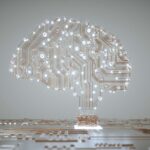
Here’s my Part 2 NBA highlight video for the first round of the 2012 NBA Playoffs. The footage comes from clips I’ve collected of the best plays from April 28 – May 13.
The video is full of high-flying dunks, sweet assists, amazing moves and layups, and plenty of buzzer beaters and game winners.
The players seen dunking in this video are Rudy Gay, Danilo Gallinari, Timofey Mozgov, DeAndre Jordan, Blake Griffin, Caron Butler, Vince Carter, Delonte West, Ramon Sessions, Jeff Teague, Carmelo Anthony, Amar’e Stoudemire, J.R. Smith, Andre Iguodala, Evan Turner, and Marc Gasol.
The players who dish the rock with amazing assists are Marreese Speights, Ty Lawson, Blake Griffin, Rajon Rondo, J.R. Smith, Andre Iguodala, and Mike Conley.
The players who perform amazing moves and nifty layups are Jrue Holiday, Rajon Rondo, Tony Parker, Rudy Gay, Chris Paul, Kawhi Leonard, Glen “Big Baby” Davis, Kevin Garnett, Carmelo Anthony, LeBron James, and Kobe Bryant.
And, finally, the players who knock down buzzer beating shots and game winners are Blake Griffin, Serge Ibaka, Derek Fisher, J.J. Reddick, Kevin Durant, and Andre Iguodala.
Some of the BEST PLAYS in this video are:
Blake Griffin’s hustle play, diving for the loose ball, and pass to DeAndre Jordan while laying on the floor, who dunks the ball on the other end
Carmelo Anthony’s facial dunk on Joel Anthony of the Miami Heat
Amar’e Stoudemire’s posterizing dunk on Joel Anthony
J.R. Smith’s incredible windmill 180 dunk against the Miami Heat
Andre Iguodala’s impressive fast break slam dunk while being fouled by Luol Deng of the Chicago Bulls
Andre Iguodala’s amazing pass in between C.J. Watson’s legs to Evan Turner for the fast break dunk
Blake Griffin’s steal and dunk at the buzzer of the first half against the Memphis Grizzlies
Kevin Durant’s game-winning shot over Shawn Marion and Ian Mahinmi of the first game between the Oklahoma City Thunder and the Dallas Mavs
The song is the instrumental version of “Burn It down” by Linkin Park.
I hope you enjoy and thanks for watching! Please like, comment, and subscribe. NBA highlights for the second round of the 2012 Playoffs is coming soon!
source


